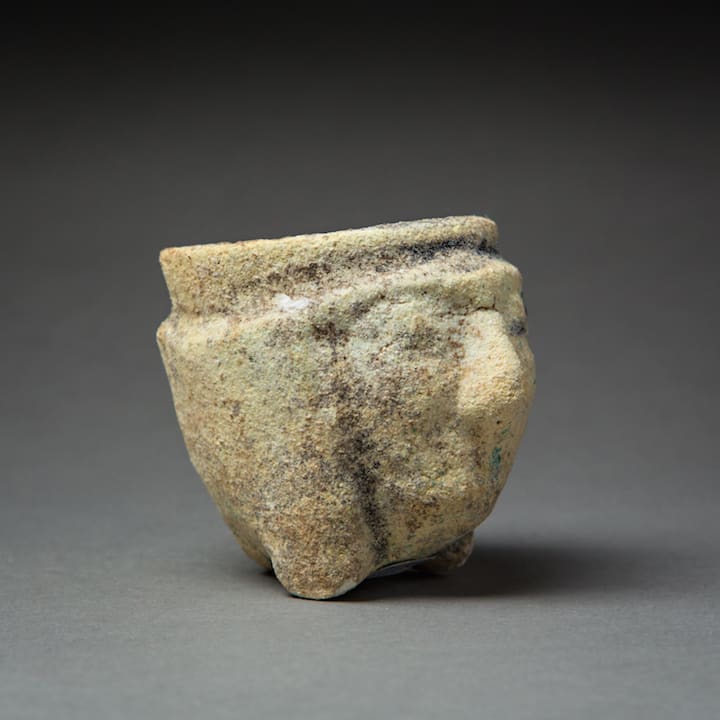Mesopotamian Faience Anthropomorphic Vessel, 2000 BCE - 1000 BCE
Faience
7.4 x 6.2 cm
2 7/8 x 2 1/2 in
2 7/8 x 2 1/2 in
OF.076
Further images
This miniature faience vessel was designed as a receptacle, with the added detail of a face protruding from one side to provide a slightly elongating effect. Its function is uncertain,...
This miniature faience vessel was designed as a receptacle, with the added detail of a face protruding from one side to provide a slightly elongating effect. Its function is uncertain, but the delicacy of its manufacture precludes the likelihood that it served some utilitarian function, and was instead probably intended for the sale, display or storage of a comparatively valuable material (such as incense or makeup). The whole vessel stands on a tripod arrangement of points that are in fact the two ends of the individual's hair (which is arranged in plate-like bands down the side of the face), and an elongated 'ponytail' at the back. The surface has been painted cream with highlights of blue, and the facial details have been picked out in black. The entire piece has a notable patina of usage.
Faience is a fine tin-glazed ceramic substance, which was first used in the Middle East in the second half of the first millennium BC. The pottery itself was usually light-coloured fineware, which was then covered by a silica-rich glass-like substance. This material was extremely expensive, and was essentially the genesis of glassmaking; the items that were used were accordingly intended for the elites of the time, notably including amulets, jewellery and small objects such as this. This is an impressive and luxurious piece of ancient artwork.
Faience is a fine tin-glazed ceramic substance, which was first used in the Middle East in the second half of the first millennium BC. The pottery itself was usually light-coloured fineware, which was then covered by a silica-rich glass-like substance. This material was extremely expensive, and was essentially the genesis of glassmaking; the items that were used were accordingly intended for the elites of the time, notably including amulets, jewellery and small objects such as this. This is an impressive and luxurious piece of ancient artwork.
33
of
33





